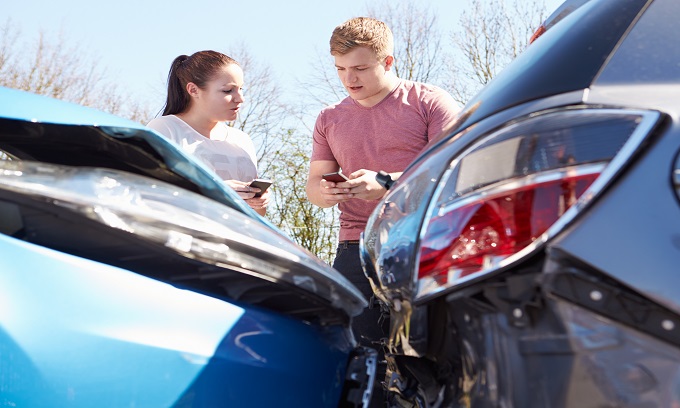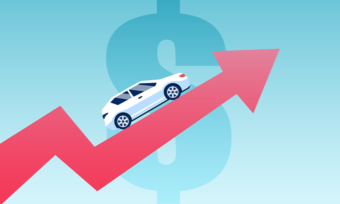KEY POINTS
- Evidence such as photos, dashcam footage, independent eyewitness accounts and police reports can help to determine who is at fault when it comes to a car accident.
- You may not have to pay your policy’s excess for a not at fault claim, however, you would need to supply your insurer with the at fault driver’s information.
- If you make a car insurance claim and you were not at fault, your no-claim bonus/discount (if you have one) will generally not be affected.
How do you determine who is at fault in an accident?
When a car accident occurs, the party responsible or ‘at fault’ will be liable for paying the costs. The expenses related to a car accident can be significant, ranging from the cost of repairing or replacing vehicles, through to towing fees and the cost of a hire car. For this reason, it’s important to determine which of the parties is at fault.
In some cases, it will be clear who the at-fault party was. For example, if another driver rear ends your car, they will generally be the one who is at fault. Additionally, if the accident occurs because another driver has run a red light or stop sign, they will also likely be found at fault.
Other cases won’t be as clear cut. Insurers will usually consider evidence like photos, dashcam footage, independent eyewitness accounts, physical proof, the Australian Road Rules and police reports when determining who caused the accident.
In some circumstances, both parties may be partly responsible for the accident. This is known as contributory negligence. For example, if you and another car reversed at the same time and hit each other, both parties may be considered equally liable, and each might pay for the portion of the damage they caused.
- Save 15%^ on your first year’s premium when you purchase a new Car Insurance policy online.
- 24/7 Phone & Online Claims.
- Budget Direct - Insurance Solved.
- Insurance that's a bit more you-shaped.
- Canstar's 2024 Most Satisfied Customers Car Insurance - National Award.
- Lodge a Claim 24/7 with our Advisors
- Flexible cover before, 24/7 claims after.
- Save $75 on new Comprehensive car insurance online.
- Conditions apply.
- Option To Pay Monthly. Save On Your Premium By
- Increasing Your Basic Excess (Within A Given Range)*
- Lodge A Claim Online 24/7
- No age-based excess.
- No excess on your first covered windscreen repair.
- Canstar 2025 Outstanding Value Car Insurance Award.
How do I make a car insurance claim when it’s not my fault?
If you have comprehensive car insurance, you can typically make a claim to cover the costs of the accident. You’ll need to provide your insurer with information about the accident, including the details of the other driver (or drivers) involved; as well as information about any witnesses to the accident, tow-truck company used and the police report filed.
To help with this process, it’s a good idea to collect the following information after the accident:
- Details of other drivers involved, including their names, contact numbers, addresses, licence numbers, registration numbers and insurance details (if applicable). If the other driver (or drivers) refuse to give their details, note vehicle registration numbers and report the accident to the police.
- Names and contact information of any eyewitnesses to the accident.
- Photos of the accident, if it is safe to take them.
Your insurer will then contact the at-fault driver’s insurer or the driver themselves (if they don’t have insurance). Your insurer may also arrange a hire car for you if you need one, depending on the coverage of your policy. That’s why it’s important to familiarise yourself with your policy’s Product Disclosure Statement (PDS), as it should contain information on what you are and aren’t covered for.
What if the other driver is uninsured?
Generally speaking, if the at fault driver is uninsured, your insurer will try to recover the costs from them directly—depending on your level of cover. In the meantime, your insurer will generally pay for the repairs to your vehicle, as well as other related costs (e.g. hire car costs) as listed in your policy.
What if the damage to my car is only minor?
If the damage your car sustains in an accident seems relatively minor, then it can be worth considering whether you want to make a claim in the first place. For example, in a two-car accident, you and the other driver may agree to sort out the cost of repairing the damage between yourselves.
In this case, you would need to get a quote from a mechanic or repairer. It can be a good idea to get a couple of quotes from different repairers, so you can show that the repair costs are reasonable. If you decide to sort out the matter privately, you might still need to let your insurer know.
Be aware that there could be risks involved with handling repairs privately. For example, it may be difficult to negotiate with the other driver if there is a dispute over who was responsible for the accident. There is also the risk that the other driver will not pay. In this event, you would have to weigh up whether pursuing legal action might be worth it, given the possible legal expenses.
Do I have to pay an excess if I’m not at fault?
Many comprehensive policies do not require you to pay an excess where you were not at fault and you have the details of the at-fault driver. However, if you were partly at fault or you are unable to provide the details of the driver of the at-fault car, you will likely be required to pay an excess in order for your claim to be processed.
Does a not at fault claim affect premiums or no-claim bonuses?
Insurers generally will not reduce your no-claim bonus/discount if you were not the at-fault driver and you provide your car insurer with the at-fault driver’s details. However, depending on your insurer, your premiums may increase after you make a claim, regardless of whether you were not at fault.
What if the car accident was completely my fault?
Claiming for an at fault accident works in a similar way to an accident where someone else was at fault, except you will generally have to pay any applicable excesses as listed in your policy. Your insurer will then settle the claim with the other driver’s insurer or directly with them (if they are uninsured).
Your no-claim bonus/discount (if you have one) may be reduced due to this kind of claim. This reduction in discount will usually be reflected when your policy is up for renewal, meaning your premiums will most likely increase.
Some policies may offer no-claim bonus/discount protection, in which you pay an additional fee as part of your premium in order to not lose your discount when making a claim. The claims that can be made with this protection may be capped to a certain number per year. Whether this option is worth the additional fee will ultimately depend on the policy, as well as your own personal circumstances.
What if the accident results in serious injury or death?
Accidents involving serious injury or death will usually be covered by Compulsory Third Party (CTP) insurance. CTP is a mandatory form of car insurance that all vehicles must have in order to be registered for use on Australian roads.
If you’re seriously injured in an accident that wasn’t your fault, you or your ‘legal personal representative’ (next of kin in cases of death) can make a claim for compensation from the at-fault driver’s CTP insurer.
What to do after a car accident
A car accident can be a distressing experience, but there are a few important steps to take afterwards:
- If anyone has been injured, there is major damage to a vehicle or the accident has caused blockages in traffic, you should call 000 for assistance from an ambulance and/or the police.
- Get the details of the driver/s involved, including their name, phone number, address, vehicle registration number and insurance information. If the other driver/s choose to withhold this information, it’s often best to call the police as soon as possible. This can assist police in collecting evidence for their report in a more timely manner.
- If there are any eyewitnesses, you should also record their names and contact information.
- If it’s safe to do so, you can take photos or videos of the accident scene and the extent of the damage, as this can assist both the police (if you need to make a police report) and your insurer (when it comes time to make a claim).
- Contact your insurance provider and begin the claims process. This can help you to get a better idea of what you are and aren’t covered for, as well as speed up the processing times associated with making a claim.
Compare car insurance policies
If you’re comparing car insurance policies, the comparison table below displays some of the policies currently available on Canstar for a 30-39 year old male seeking comprehensive cover in NSW without cover for an extra driver under 25. Please note the table is sorted by Canstar Star Rating (highest to lowest) followed by provider name (alphabetical) and features links direct to the providers’ websites. Consider the Product Disclosure Statement (PDS) and Target Market Determination (TMD), before making a purchase decision. Contact the product issuer directly for a copy of the PDS and TMD. Use Canstar's car insurance comparison selector to view a wider range of policies. Canstar may earn a fee for referrals
Cover image source: Monkey Business Images/Shutterstock.com








